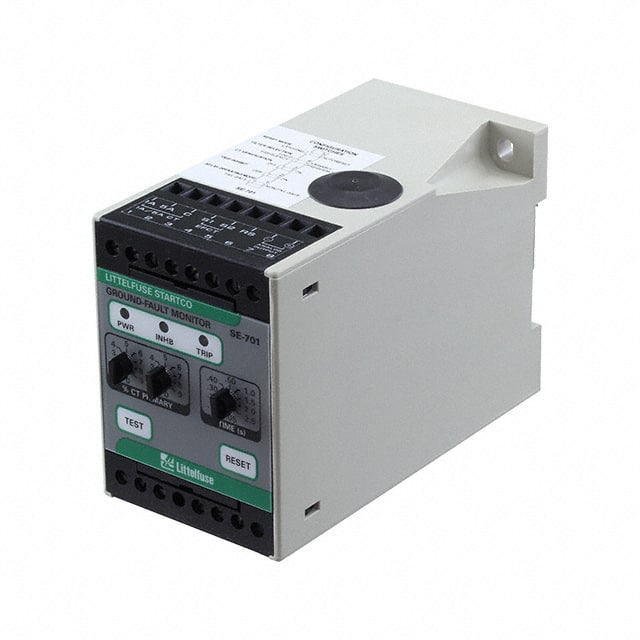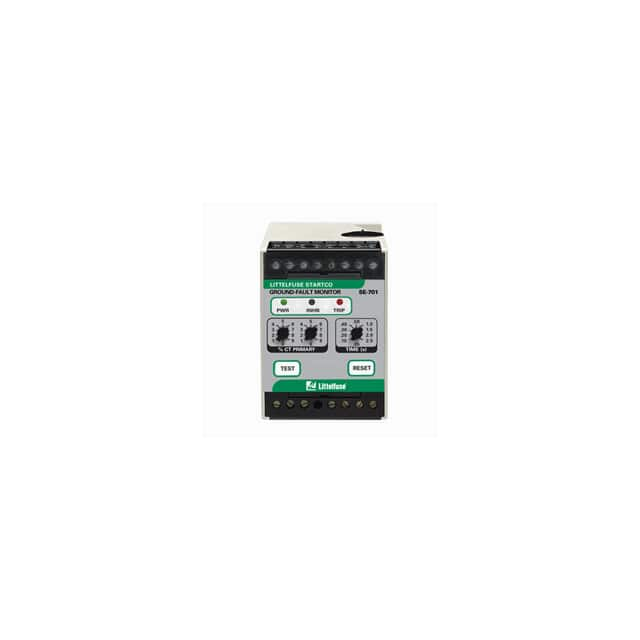SE-701 Series, Protection Relays & Systems
Results:
4
Manufacturer
Series
Voltage - Supply
Operating Temperature
Delay Time
Mounting Type
Function
Termination Style
Trip Range
Features
Results remaining:4
Applied Filters:
SE-701
About Protection Relays & Systems
Protection relays are essential components of industrial systems designed to detect and respond to abnormal operating conditions, preventing damage to equipment and ensuring the safety of personnel. These relays constantly monitor the system for any deviations from normal operating parameters, triggering an alert or disconnecting the offending device from the network to prevent potential hazards.
Arc-Flash Detection: Arc-flash detection relays are used to monitor electrical activity and detect dangerous arcing faults in electrical systems. These relays can quickly identify arc-flash events and trigger a system shutdown to prevent further damage.
Temperature Monitoring: Temperature monitoring relays are employed to detect overheating conditions in electrical equipment, such as motors and transformers. These relays can sense temperature changes in real-time and initiate corrective measures before the equipment is damaged.
Ground Fault Detection: Ground fault detection relays are utilized to detect faults in the grounding system of electrical equipment, preventing electrical shocks and minimizing damage to the equipment.
Over-Current Protection: Over-current protection relays are designed to detect excessive current flow in electrical systems, such as short circuits or overloads. These devices can quickly disconnect the affected circuit, limiting the damage and preventing disruption to the rest of the system.
Over-Voltage Protection: Over-voltage protection relays are used to detect and protect against voltage surges or spikes in electrical systems, preventing damage to sensitive equipment and reducing the risk of electrical fires.
Reverse Power Flow Protection: Reverse power flow protection relays are utilized in power generation systems to detect and prevent the reverse flow of power into the generator, protecting against potential damage and improving system stability.
Over-Frequency and Under-Frequency Protection: Over-frequency and under-frequency protection relays are employed to detect deviations from normal frequency levels in electrical systems, such as those caused by load shedding or generator failure. These relays can initiate corrective measures to restore the system to its normal operating frequency.
Phase Loss, Sequence, or Imbalance Protection: Phase loss, sequence, or imbalance protection relays are used to detect and prevent electrical system faults caused by phase loss, sequence deviation, or voltage imbalances, protecting against equipment damage and reducing the risk of electrical hazards.
In summary, protection relays serve as critical components of industrial systems designed to detect and respond to abnormal operating conditions, preventing damage to equipment and ensuring the safety of personnel. These relays employ a variety of detection functions, including arc-flash, temperature monitoring, ground fault, over-current, over-voltage, reverse power flow, over-frequency, under-frequency, and phase loss, sequence, or imbalance protection. By constantly monitoring the system for deviations from normal operating parameters, these relays facilitate the efficient and reliable operation of industrial systems, ultimately supporting the performance and functionality of a wide array of industrial machinery and equipment.


